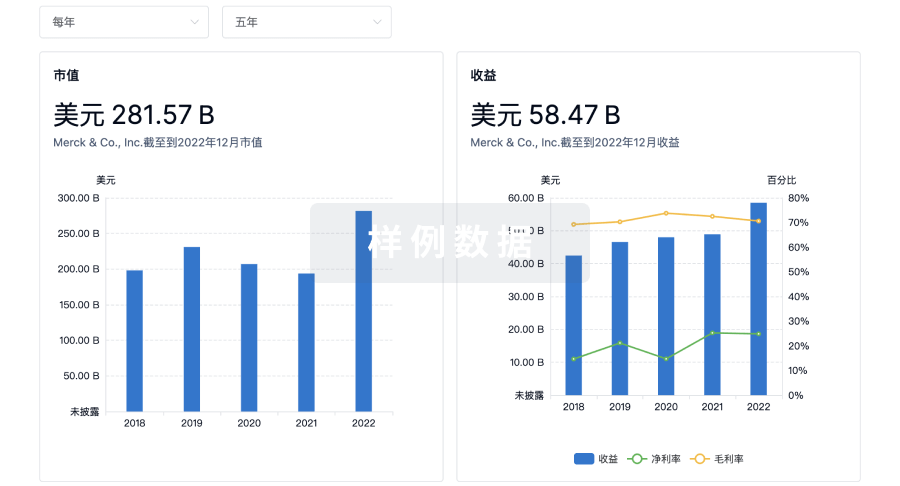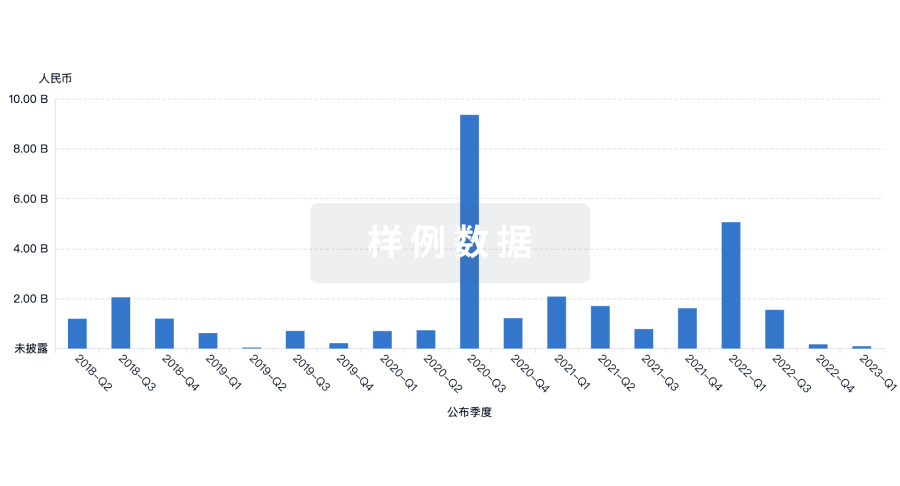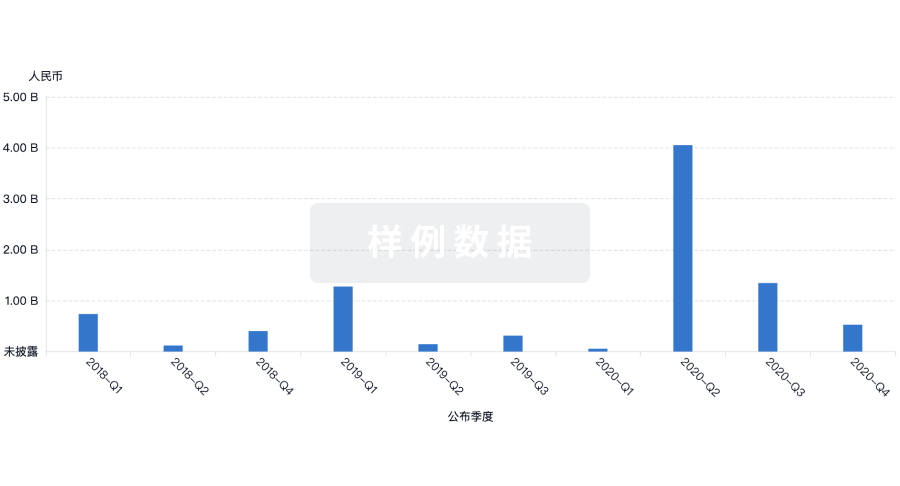预约演示
更新于:2025-05-07

Changzhou University
更新于:2025-05-07
概览
标签
神经系统疾病
呼吸系统疾病
肿瘤
小分子化药
关联
2
项与 常州大学 相关的药物CN114507201
专利挖掘100 项与 常州大学 相关的临床结果
登录后查看更多信息
0 项与 常州大学 相关的专利(医药)
登录后查看更多信息
14,006
项与 常州大学 相关的文献(医药)2025-12-31·Energy Sources, Part A: Recovery, Utilization, and Environmental Effects
Investigation of amplification process of heavy oil viscosity reduction device based on jet cavitation using lab experimental and numerical simulation method
作者: Cui, Shuqi ; Gu, Yutong ; Liu, Xuedong ; Liu, Wenming ; Jiang, Wei ; Peng, Tao ; Zhu, Zirui
2025-12-31·Energy Sources, Part A: Recovery, Utilization, and Environmental Effects
Numerical simulation of oil evaporation and emission loss in loading oil into railway tankers based on a VOF method
作者: Xia, Ping ; Chai, Xinhan ; Kong, Xiangyu ; Ge, Yuqian ; Zhou, Ning ; Huang, Weiqiu ; Li, Xufei ; Zhou, Yankang ; Zhang, Cheng
2025-12-31·Transportmetrica B: Transport Dynamics
Real-time traffic incident data-based perimeter control threshold estimation method
作者: Yao, Jiarong ; Wang, Yawei ; Wang, Jiawen ; Hang, Jiayu
4
项与 常州大学 相关的新闻(医药)2024-12-23
12月21日,我校常州校友会成立大会在常州召开。校党委书记戴建君,校友会常务副会长、原副校长陆涛,校长助理邬瑞斌出席本次大会。校友会、科学技术研究院等单位负责人,各兄弟校友会代表,在常校友等300余人参加了大会。
揭牌仪式
校党委书记戴建君对常州校友会的成立致以诚挚祝贺。他表示,近年来在广大校友的关心支持下,学校积极拓展办学资源,事业不断取得新进展、实现新突破。希望各位校友回访母校、深度参与学校发展进程,也希望常州校友会发挥平台作用,为在常校友事业助力赋能。
常州校友会筹备组代表、1995级校友邢枫向大会介绍常州校友会筹备情况。校友会常务副会长陆涛宣读常州校友会组织机构成员名单,1977级校友、原常州医药技术开发公司总经理何浩明担任名誉会长,1985级校友、常州市第四制药厂有限公司党委书记、董事长范新华担任会长,1977级校友、常州大学教授周晓鹰等10人担任副会长;1995级校友、常州飞凡医药总经理邢枫担任秘书长,2011级校友、常州大学副教授吕金鹏等10人担任副秘书长。
校党委书记戴建君、常州校友会会长范新华共同为常州校友会揭牌。校党委书记戴建君、校友会常务副会长陆涛为常州校友会组织机构成员颁发聘书。
颁发聘书
大会上,校友会常务副会长、原副校长陆涛从办学规模、师资建设、学科布局、科学研究、社会服务等方面详细介绍了学校发展近况,并向校友展示了学校现行的校友服务体系。他表示,学校将继续响应校友需求、做好校友服务,欢迎广大校友常回母校看看。
常州市药学会理事长刘志洪在致辞中表示,常州生物医药产业基础扎实、特色鲜明、发展势头强劲,诚挚邀请中国药大校友来常州投资兴业,共同开创常州生物医药产业集群的美好未来。
1977级校友、原国家食品药品监督管理总局信息中心党委书记、主任洪晓顺,1985级校友、常州校友会会长范新华,1977级校友、常州校友会名誉会长何浩明深情回顾了各自在中国药大求学的历程。他们表示,将全力支持校友工作,不负学校和校友的信任与期望,积极推动常州校友会的发展。
成立大会期间还围绕药品、医疗器械的研发生产等主题开展了校友论坛。
来源|校友会
文字|任建业
编辑|常佳
指导|王琳琳
高管变更
2024-06-19
·动脉网
合成生物学被称作是继“DNA双螺旋结构的发现”和“人类基因组计划”之后,以工程化的手段设计合成基因组为标志的第三次生物技术革命。目前已有40多个国家、500多个机构资助合成生物学研究。美国、英国、欧盟、日本、加拿大、澳大利亚、新加坡等国家均有引导扶持合成生物学发展的政策。
根据Arizton2022全球合成生物学报告数据,2021年全球市场规模约为101.3亿美元,预计到2027年,市场有望达到387.3亿美元。
2022年5月,国家发展和改革委员会印发了《“十四五”生物经济发展规划》,提出推动生物技术和信息技术融合创新,加快发展生物材料、生物农业、生物医药等多个产业。在国家宏观战略指引下,上海、深圳、杭州、天津、山东等多个省市都已开始布局合成生物产业,尤其深圳、杭州等地已出台专门产业支持政策。
在《江苏省政府关于加快培育发展未来产业的指导意见》文件中,也将合成生物产业作为今后未来产业发展重点之一。其中,江苏常州基于过往积累的深厚制造业基础以及完备的产业体系,正在全速抢占合成生物产业发展新风口。
目前,常州合成生物领域主要企业有72家,包括创健医疗、药物研究所、常茂生物、康润生物、三高生物等知名合成生物学企业,2023年主营收入达到97.38亿元。目前已重点建设3大产业园、6家创新平台,在建项目21个、总投资超100亿元。
为进一步扩大产业界对常州在合成生物学领域上的大力部署及优势积淀的认知,近日,常州网信办举办了“智汇常州,锚定未来——合成生物采风行”活动,动脉网等一众专业媒体以及财经自媒体、微博大V受邀参加。
通过本次活动对南师大合成生物研究院、未米生物、常州药物研究所、华大工程生物学长荡湖研究所、创健医疗等落地常州的合成生物学研究所及企业进行了深度考察调研,得以窥见常州市在布局合成生物学领域上的既有积累与未来潜力。
现已重点建设3大合成生物产业园,6大创新平台
目前常州合成生物产业园区主要布局在新北、金坛、武进等区域,包括长三角合成生物产业创新园、金坛合成生物产业园和西太湖合成生物创新产业园。
其中,长三角合成生物产业创新园于2023年10月开园,由常州市人民政府、常州高新区管委会及南京师范大学合作共建,以南京师范大学合成生物学产业研究院为产业孵化平台。开园仪式上,有20个重点项目集中签约,总投资9.5亿元,同时成立了20亿元的合成生物产业专项基金和2亿元的园区发展基金。
南京师范大学合成生物学产业研究院作为新北区的产业孵化平台,于2023年6月成立,由南师大团队、南京师范大学常州创新发展研究院和常州新北区区政府共同出资组建。围绕非模式工业微生物的基因编辑、基于人工智能的合成生物学细胞工厂设计、微生物代谢工程精准调控等合成生物学前沿技术,建设集成、开放、共享的科技创新平台,集技术研发、技术转化、企业孵化、资本运营为一体。
从事微生物资源开发及生物基化学品制备研究的中国工程院院士、南京师范大学副校长黄和院士及其团队是该研究院的“金字招牌”,目前已经孵化出一批DHA发酵项目、生物基苹果酸项目、脂禾项目等。
其中DHA发酵项目目前已经完成产业化,获得两轮共计9000万元的投资;生物基苹果酸项目、脂禾项目也获得了数千万元的投资。目前,研究院有一批项目处于与企业联合研发、生产阶段,还有20多个项目已经处于小试阶段。
将DHA发酵的藻粉添加至鸡饲料中,鸡食用后所产鸡蛋含有DHA
位于金坛区的金坛合成生物产业园于2023年9月正式启动,产业园总规划用地面积约1100亩,已经建成原液车间、封装车间、研发楼以及配套设施。园区主要以华大基因为龙头,设立生物医药孵化器和配套创投基金,促进科技和金融资本的深度融合。
华大基因早在2010年开始布局合成生物学,参加了国际合作酵母基因组合成计划,奠定其在合成生物学领域的优势地位。2021年末,常州市金坛区政府、金坛经开区、华大研究院签订战略框架协议,华大合成生物学产研基地项目落地金坛经开区生物医药产业园区,总投资3.2亿元,总面积25000㎡。
目前华大在金坛共落了两期项目:一期是合成生物学创新中心项目,主要是基于国产化高通量合成设备搭建高质量、规模化、自动化合成公共平台,并围绕合成生物学打造创新研究基地、创新型人才培养基地和创新孵化基地;二期主要以建设工具酶、抗原抗体等多种核心功能大分子原料的应用研究及生产线,解决各行业蛋白原料被国外“卡脖子”问题,实现稳定量产和进口替代。
为配合金坛区打造合成生物学产业链,华大同时也将自身专注于生命健康的产业孵化器蓝色彩虹及自有基金引进园区。
通过借鉴自身“产学研”一体化发展模式发展经验,华大在金坛区设立华大工程生物学长荡湖研究所专注产品应用研究,为产业发展注入新动力;常州新一产生命科技有限公司则专注于相关产品的研发、生产和销售。
位于武进区的西太湖合成生物创新产业园于2023年10月底揭牌启动,目前园区已集聚普罗吉医药、智态生创等一批合成生物重点产业化项目,并与深创投、松禾资本等多家知名投资机构共同发起成立了西太湖合成生物产业投资联盟,加快建立中国科学院深圳先进技术研究院—常州合成生物化学联合研究中心、蛋白质技术国家工程研究中心转化基地等多个重点平台。
值得注意的是,园区内企业创健医疗II期工程于6月7日开工,将建设国内最大的年产30吨重组人源化胶原蛋白生产基地。
创健医疗成立于2015年6月,主要从事重组人源胶原蛋白原料及其制品研发、生产,利用目前较具优势的真核生物反应器生产的重组人源胶原蛋白无抗原性和致敏性、安全性高、重现性好、100%不含动物源成分的优点,并以此为主要原料,参照FDA510K和CFDA批文,进行生物海绵、凝胶、胶原基敷料、人工皮肤、骨移植材料、口腔胶原膜、人工血管、人造脑膜等多种产品的设计开发与生产。目前企业已完成B轮超2亿元融资,并于今年1月8日在中信证券的辅导下启动IPO备案。
创新平台方面,除以上提到的南师大常州合成生物学产业研究院、华大工程生物学长荡湖研究所,还包括溧阳天目湖健康研究院、江苏省重组蛋白质制造工程实验室、常州大学、江苏理工学院等相关创新平台。
已落地70余家合成生物学企业、年营收近百亿元
目前,常州市合成生物领域主要企业有72家,其中高企32家,规上企业31家,专精特新22家,上市公司2家,潜在独角兽两家,拥有创健医疗、常州药物研究所、常茂生物、康润生物、三高生物等一批重点企业,2023年主营收入达到97.38亿元。
除了上文已经介绍到的创健医疗,常州药物研究所、未米生物也在本次采风行活动调研之列,以下做简单介绍。
常州药物研究所有限公司成立于2010年11月,是一家集研发、制造、应用为一体的国家高新技术企业,前身为始建于1984年省属科研事业单位。
企业主营产品“医用透明质酸钠凝胶”(属III类医疗器械),主要用于防止或极大减少腹(盆)腔手术及宫腔手术的术后粘连,市场占有率连续多年名列前茅;新产品“注射用交联透明质酸钠凝胶”首创透明质酸钠反向交联技术,并拥有蛋白除杂、均质凝胶等3项核心专利,打破国外技术垄断。
2022年常州药物研究所实现营业收入14682.1万元,与去年同期相比增长39.7%;2022年企业净利润4039.8万元,净利润同比增长101.2%。
未米生物成立于2017年7月,是一家专注于基因编辑和生物育种技术创新研发的高新技术企业,于2023年4月获得由厚新健投独家投资的数千万元Pre-A轮融资。
目前该企业已经建立了玉米、水稻、大豆、棉花、小麦、番茄、烟草、生菜、黄瓜等近二十种作物的高通量无基因型限制遗传转化和基因编辑平台,为国内外200多家科研和生物种业企业提供技术服务,开展项目合作,年产阳性苗20万株。
未米生物具备自主知识产权的基因编辑Cas酶,植物基因敲除、敲入和替换核心技术,能够实现精准育种主要植物物种全覆盖。
结合传统制造业优势,打造合成生物学产业联动新格局
众所周知,常州在新能源产业方面的表现可圈可点。
如今常州又在合成生物学这个千亿新赛道中优先抢得一席之地,且地域产业集群优势初显,既在于常州过往积淀的深厚制造业基础,又在于常州政府对合成生物学产业布局的重视和大力培育。
“合成生物学离不开制造业,哪里对制造业的理解最深刻,就能吸引到国内甚至国际上最优秀的人才,将技术成果落地。”黄和院士曾公开表示,“常州有着制造业的深厚功底、有非常完备的产业体系、有了不起的产业生态。相信未来合成生物产业‘北有天津、南有深圳,中有常州’。”从地理位置上看,常州正好位于长三角的中轴位置,产业链优势刚好可以辐射整个长三角地区。
在既往积累的制造业优势基础上,常州政府正全速抢占合成生物学赛道新风口,加快培育未来产业。
2023年8月,常州市成立合成生物创新发展专班,围绕抢抓合成生物产业新一轮发展机遇紧密部署;并出台了《关于推进合成生物产业高质量发展的实施意见》及《常州市关于支持合成生物产业高质量发展的若干措施》等政策文件,从创新链、产业链、人才链、资金链等多方面进行了鼓励布局,全力打造合成生物产业引领区域发展的新引擎。
如针对合成生物产业研发机构不足、原始创新能力较弱、高端人才缺乏等瓶颈问题,从合成生物学领域“基础研究+技术攻关+成果产业化+科技金融+平台建设+人才支撑”全过程创新生态链的各个要素和中间链各个环节予以支持。
围绕合成生物产业发展规律,针对其研发周期长、前期投入大、人才引育难等突出问题,常州设置创新成果转化、产业服务平台建设、人才引育专项、投融资引导基金等多个政策支持点,实实在在解决企业真正的需求点,持续优化技术交易、审评审批、市场监管、知识产权保护等营商环境,开创产业政策环境新局面。
《实施意见》及《若干措施》明确,到2027年,全市合成生物产业产值超过1000亿元,带动绿色生物制造、产业装备及高附加值生物材料等形成产业集聚,成为长三角一流的合成生物产业创新高地。
2023年11月,常州率先发布“合成生物10条”,成为江苏省首个以市委、市政府名义发布促进合成生物产业发展专项政策措施的城市。
同月,南京师范大学国际合成生物学研究中心揭牌,诺贝尔化学奖得主、世界顶尖科学家协会主席罗杰·科恩伯格教授担任中心首席科学家。
2024年3月8日,江苏省市场监督管理局正式发文批复成立江苏省合成生物标准化技术委员会,华大工程生物学长荡湖研究所和南京师范大学常州合成生物学产业研究院有限公司为秘书处联合承担单位,秘书处设在华大工程生物学长荡湖研究所。由华大长莎湖研究所所长沈玥参与,我国主导制定的合成生物学(技术)领域首个国际标准正式发布。
2024年6月,常州启动举办2024“华罗庚杯”常州市创新创业大赛合成生物专题挑战赛,全面推进2024江苏省“J-TOP创新挑战季”合成生物专场活动。下一步常州将成立“合成生物医产科教联盟”,加强企业、高校、研究院所、医疗机构在研发、技术转移转化、市场拓展等方面协调发展。同时通过“生物医药科创汇”等品牌活动,加快合成生物在新医药、医疗器械、生物材料等方面的信息共享、创新联合体打造等,推动合成生物产业科技、产业双向发力,举办峰会、会展或赛事活动,吸引项目、人才集聚常州。
显而易见,对合成生物学这个新质生产力的谋篇布局,常州政府无疑是“动了真格”。常州未来将以怎样的速度、集聚更多优秀合成生物学项目落地,形成产业集群优势以辐射整个长三角地区,我们拭目以待。
*封面图片来源:123rf
近
期
推
荐
声明:动脉网所刊载内容之知识产权为动脉网及相关权利人专属所有或持有。未经许可,禁止进行转载、摘编、复制及建立镜像等任何使用。
动脉网,未来医疗服务平台
财报
2023-08-30
·药研发
「 本文共:16条资讯,阅读时长约:3分钟 」今日头条荣昌PD-1/VEGF双抗上Ⅰ期临床。荣昌生物PD-1/VEGF双抗RC148在Clinicaltrials.gov网站上注册一项Ⅰ期临床,拟评估RC148在局部晚期不可切除或转移性实体瘤患者中的安全性、耐受性、药代动力学和初步疗效。实体肿瘤包括不限于非小细胞肺癌、三阴乳腺癌、卵巢癌、宫颈癌、结直肠癌等其他可能获益的癌种。目前,荣昌生物已布局有5款双特异性抗体,RC148是该公司首款双抗新药。国内药讯1.百济神州PD-1单抗新适应症报产。百济神州PD-1抗体替雷利珠单抗注射液的新适应症上市申请获CDE受理,推测申报的适应症为“广泛期小细胞肺癌(ES-SCLC)的一线治疗”。今年5月,该新药联合化疗一线治疗ES-SCLC患者的Ⅲ期临床(RATIONALE-312)已达到主要终点,替雷利珠单抗联合治疗较化疗显著延长患者的总生存期。目前,该药已有11项适应症获NMPA批准,还有一项肝细胞癌(HCC)适应症上市申请正在审评中。2.辉瑞ER靶向PROTAC启动乳腺癌Ⅲ期临床。辉瑞与Arvinas公司开发的ER靶向PROTAC蛋白降解疗法vepdegestrant(ARV-471、PF-07850327)在中国登记启动一项国际Ⅲ期临床(VERITAC-3),比较ARV-471联合哌柏西利对比来曲唑联合哌柏西利,一线治疗ER+/HER2-、晚期乳腺癌患者的有效性与安全性。这是ARV-471的第2项III期临床,该项研究国内拟入组177 人,国际入组1180 人;试验的中国部分由中国医学科学院肿瘤医院徐兵河医学博士担任主要研究者。3.迪哲JAK1抑制剂拟纳入优先审评。迪哲医药高选择性JAK1抑制剂戈利昔替尼胶囊获CDE拟纳入优先审评,用于既往至少接受过一次标准治疗的复发或难治的外周T细胞淋巴瘤(r/r PTCL)成人患者。今年公布于ASCO2023年会上的国际临床(JACKPORT8 Part B)积极数据显示,独立评审委员会(IRC)评估的ORR达44.3%(39/88),完全缓解率为23.9%。2022年,FDA已授予戈利昔替尼治疗r/r PTCL的快速通道资格。4.华津溶瘤细菌获SCLC孤儿药资格。华津医药自主研发的广谱溶瘤产品SGN1(桑美威克®,SalMet-Vec®)获FDA授予孤儿药资格认定,用于治疗小细胞肺癌(SCLC)。SGN1通过减毒沙门氏菌载体搭载特异的甲硫氨酸水解酶,剥夺肿瘤生长所需的必须氨基酸,从而杀伤肿瘤并阻止肿瘤扩散。此前,该产品已获得FDA授予用于治疗骨肉瘤和肝细胞(HCC)癌两项孤儿药资格。5.劲方3款RAS通路靶向药海外授权。劲方医药宣布与Verastem Oncology公司达成独家合作许可协议,授予Verastem公司三款早期阶段RAS通路靶向药在大中华区(包括中国大陆、香港、澳门、台湾地区)之外的全球开发和商业化权利。根据协议,劲方医药将获得首个合作项目1150万美元预付款,包括首付款及研发支持、选择权费用;总额超过6.25亿美元的潜在后续里程碑付款;以及产品的销售分成。6.万泰生物公布2023H1财报。近日,万泰生物发布2023年上半年业绩报告,上半年实现营业收入41.64亿元,同比下降29.78%;实现净利润17.02亿元,同比下降36.78%。营收和净利的下跌,主要是二价宫颈癌疫苗及新冠相关产品销售收入出现较大下降导致。根据华安证券对生物制品2023年上半年批签发次数梳理,万泰生物双价HPV在2023上半年共获批签发230批次,同比增长55.41%。国际药讯1.BMS创新贫血疗法获批扩展适用范围。百时美施贵宝血红细胞成熟剂Reblozyl(luspatercept)获FDA批准新适应症,用于一线治疗极低至中危骨髓增生异常综合征(MDS)成人患者的贫血。在Ⅲ期COMMANDS试验中,与重组人促红素组相比,利布洛泽治疗组24周时患者实现摆脱红细胞输注12周(RBC-TI)且平均血红蛋白(Hb)水平增加≥1.5g/dL的比例显著更高(58.5%vs31.2%)。2.礼来口服Lp(a)抑制剂早期临床积极。礼来脂蛋白(a)-Lp(a)抑制剂muvalaplin在JAMA期刊上公布其首次人体Ⅰ期临床积极结果。Muvalaplin可通过阻断apo(a)-apo B100相互作用,同时避免与同源蛋白纤溶酶原(plasminogen)的相互作用,抑制Lp(a)形成。试验结果显示,Muvalaplin可降低受试者胆固醇浓度,经安慰剂校正的Lp(a)最大降幅为63%至65%;未观察到纤溶酶原水平或活性的显著变化。3.Mirati公司KRAS G12D抑制剂见刊。Mirati公司KRAS G12D抑制剂MRTX1133在《细胞》子刊Developmental Cell与Cancer Cell上发表用于小鼠模型(16种)中治疗早期和晚期肿瘤的临床前研究积极结果。结果显示,MRTX1133能诱导Fas通路的表达,逆转了早期肿瘤生长,增加CD8+T细胞浸润的同时减少髓系细胞的浸润。当免疫检查点抑制剂与MRTX1133联合用药时,显示肿瘤持续消退、增强癌细胞清除并改善生存结果。4.Artiva公司通用型NK疗法获批自免病临床。Artiva公司开发的可在门诊与单克隆抗体或先天细胞接合剂联合使用的同种异体NK疗法AB-101(AlloNK)获FDA临床许可,与利妥昔单抗联用,治疗活动性狼疮性肾炎(LN)患者的系统性红斑狼疮(SLE)。AB-101将作为ADCC增强疗法,以增强利妥昔单抗驱动更深水平的B细胞耗竭的能力。在AB-101联合利妥昔单抗治疗复发/难治B细胞非霍奇金淋巴瘤患者(B-NHL)的Ⅰ/Ⅱ期临床中,AB-101组合ORR达到57.1%。5.珐博进CTGF单抗DMD的Ⅲ期临床失败。珐博进靶向CTGF的潜在“first-in-class”抗体Pamrevlumab在治疗杜氏肌营养不良症(DMD)的Ⅲ期临床未达到主要终点和关键次要终点。受此影响,该公司股价盘后大跌20%,目前市值仅剩下1亿美元。CTGF是组织重塑和纤维化的中心介质,涉及广泛的纤维化和增生性疾病。此前,该药已被FDA授予治疗特发性肺纤维化(IPF)、胰腺癌和DMD的孤儿药资格,以及治疗胰腺癌的快速通道资格。6.武田引进一款FRα靶向ADC日本权益。武田与ImmunoGen公司就后者一款临床后期FRα靶向ADC新药Elahere达成合作许可协议,获得Elahere在日本开发和商业化权益。根据协议,武田将支付3400万美元的预付款和里程碑后期付款,以及产品的销售分成。Elahere已在用于治疗铂耐药卵巢癌患者的Ⅲ期临床MIRASOL获得积极结果,与化疗相比,该药显著延长患者的总生存期,将死亡风险降低33%。华东医药拥有Elahere的中国权益。医药热点。1.上海发布2023年基本公卫服务工作通知。8月28日,上海市卫健委、上海市财政局发布《关于做好2023年基本公共卫生服务工作的通知》,从四个方面对上海市2023年基本公卫服务工作展开部署。在加强经费管理和使用方面,要求各区确保2023年基本公卫服务项目人均经费不低于国家要求的89元标准,较上一年度新增的5元经费重点用于老年人和儿童相关的基本公卫服务。2.全国新生儿遗传代谢病筛查率超九成。中国残联日前公布了《国家残疾预防行动计划(2021—2025年)》贯彻实施情况报告。2022年,我国新生儿出生缺陷防治和发育障碍早期干预水平得到进一步提升。全国婚检率达70.9%,孕前优生健康检查目标人群覆盖率达93.5%,产前筛查率达85.7%,新生儿遗传代谢病和新生儿听力筛查率分别达到98.1%、97.1%,3岁以下儿童系统管理率达到93.0%。3.江苏省政府发布一批医药高校职务任免通知。江苏省政府在官网发布一批市属医学高校院所领导职务任免通知,经研究决定:任命程海波为南京中医药大学校长;任命郑骏年为徐州医科大学校长;任命方祝元为南京中医药大学副校长;任命徐树法为南京中医药大学副校长,免去其常州大学副校长职务;任命胡立宏为南京中医药大学副校长;任命胡孔法为南京中医药大学副校长;任命孙秀兰为南京中医药大学副校长;任命曹鹏为南京中医药大学副校长;任命赵霞为南京中医药大学副校长;任命徐海波为徐州医科大学副校长;任命刘慎军为徐州医科大学副校长;任命曹君利为徐州医科大学副校长;任命王媛为徐州医科大学副校长;任命孙志明为徐州医科大学副校长;任命郭栋为徐州医科大学副校长;任命吕凌为徐州医科大学副校长;任命赵胜忠为江苏卫生健康职业学院院长;任命殷忠勇为江苏医药职业学院院长;任命刘云为南京医科大学第一附属医院(省人民医院)院长;任命吴文忠为南京中医药大学附属医院(省中医院)院长;免去胡刚的南京中医药大学校长职务;免去乔学斌的南京中医药大学副校长职务;免去王人颢的徐州医科大学副校长职务;免去陈国忠的江苏医药职业学院院长职务。评审动态 1. CDE新药受理情况(08月30日) 2. FDA新药获批情况(北美08月29日)股市资讯上个交易日 A 股医药板块 +0.01%涨幅前三 跌幅前三通化金马+10.05% 易瑞生物-9.45%科美诊断+5.69% 昆药集团-6.81%艾 力 斯 +5.64% 仙琚制药-3.94% 【通化金马】自主研发的琥珀八氢氨吖啶片项目召开了Ⅲ期临床试验揭盲预备会,正式完成盲态数据审核。【中关村】取得国家知识产权局颁发的实用新型专利证书,实用新型名称为分样筛。【华润三九】2023H1营收131.46亿元(+56.48%),归母净利润18.77亿元(+30.99%),扣非净利润18.27亿元(+37.22%)。- The End -戳“阅读原文”,了解更多医药研发及股市资讯。
临床3期优先审批孤儿药ASCO会议快速通道
100 项与 常州大学 相关的药物交易
登录后查看更多信息
100 项与 常州大学 相关的转化医学
登录后查看更多信息
组织架构
使用我们的机构树数据加速您的研究。
登录
或

管线布局
2025年12月07日管线快照
管线布局中药物为当前组织机构及其子机构作为药物机构进行统计,早期临床1期并入临床1期,临床1/2期并入临床2期,临床2/3期并入临床3期
药物发现
1
1
临床前
登录后查看更多信息
当前项目
| 药物(靶点) | 适应症 | 全球最高研发状态 |
|---|---|---|
Compound E5 (Nanjing University) ( PDHK1 x PKM2 ) | 非小细胞肺癌 更多 | 临床前 |
CN114507201 | 神经系统疾病 更多 | 药物发现 |
登录后查看更多信息
药物交易
使用我们的药物交易数据加速您的研究。
登录
或

转化医学
使用我们的转化医学数据加速您的研究。
登录
或

营收
使用 Synapse 探索超过 36 万个组织的财务状况。
登录
或

科研基金(NIH)
访问超过 200 万项资助和基金信息,以提升您的研究之旅。
登录
或

投资
深入了解从初创企业到成熟企业的最新公司投资动态。
登录
或

融资
发掘融资趋势以验证和推进您的投资机会。
登录
或

生物医药百科问答
全新生物医药AI Agent 覆盖科研全链路,让突破性发现快人一步
立即开始免费试用!
智慧芽新药情报库是智慧芽专为生命科学人士构建的基于AI的创新药情报平台,助您全方位提升您的研发与决策效率。
立即开始数据试用!
智慧芽新药库数据也通过智慧芽数据服务平台,以API或者数据包形式对外开放,助您更加充分利用智慧芽新药情报信息。
生物序列数据库
生物药研发创新
免费使用
化学结构数据库
小分子化药研发创新
免费使用
